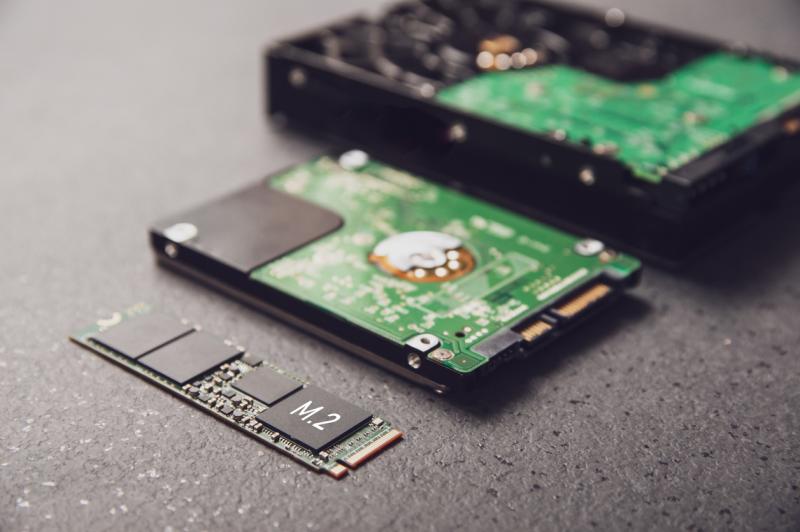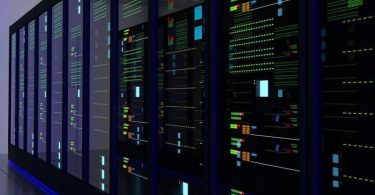Hard disk drives (HDDs) and solid-state drives (SSDs) are both types of storage devices, but their technology and performance are different. SSDs use NAND-based flash memory, a solid-state technology with no moving parts. This makes SSDs faster, more durable, and more energy-efficient. HDDs store data magnetically on rotating disks with read/write heads. This makes data access and transfers slower and more likely to be damaged by physical damage. Even though SSDs usually cost more per gigabyte, their speed and reliability make them more popular in computers, laptops, and gaming consoles. However, HDDs are still a cheap way to store and back up a lot of data.
What is SSD?
A solid-state drive (SSD) is a type of data storage device that stores and retrieves digital information using NAND-based flash memory. SSDs don’t have any moving parts like hard disk drives (HDDs), so they are more durable, use less energy, and are less likely to break down mechanically. SSDs can also access and transfer data much faster than HDDs because they don’t have any moving parts. This leads to faster boot times, faster application loading, and better overall system performance.
SSDs come in different sizes and shapes, like 2.5-inch, M.2, and PCIe (Peripheral Component Interconnect Express) slots, so that they can be used in systems with different needs. SSDs are used increasingly in computers, laptops, gaming consoles, and data centres because they are fast, reliable, and don’t make much noise when they work.
But SSDs usually cost more per gigabyte than HDDs, making them less appealing for storing data. Also, SSDs have a limited number of write/erase cycles, which can cause them to have a shorter lifespan than HDDs. However, recent improvements in SSD technology have made them much more durable.
In conclusion, solid-state drives (SSDs) offer fast, reliable, and energy-efficient storage solutions that are becoming increasingly popular in a wide range of applications, even though they are more expensive and may have limits in terms of how many times they can be written to.
What is HDD?
A hard disk drive (HDD) is a device that stores and retrieves digital information using magnetic storage. HDDs have one or more platters that spin and are covered with magnetic material. The read/write heads move across the surfaces of the platters to access or change data. HDDs use mechanical parts, making them more likely to break, slower at accessing and transferring data, and less energy-efficient than solid-state drives (SSDs).
Even though HDDs have these problems, they have larger storage capacities at a lower cost per gigabyte. This makes them a popular choice for long-term storage and large amounts of data. HDDs have changed over the years in terms of how much space they can hold, how fast they work, and how they look. The most common sizes are 3.5-inch drives for desktop computers and 2.5-inch drives for laptops.
In conclusion, HDDs are more affordable and have larger storage capacities than SSDs; they are slower, don’t last as long, and use more energy. SSDs are slowly replacing HDDs in many situations because SSDs are faster and last longer. But HDDs are still a cheap way to store large amounts of data and make backups in cases where speed is not as important.
Difference Between SSD and HDD
There are significant differences between solid-state drives (SSDs) and hard disk drives (HDDs) in terms of technology, performance, durability, and cost:
Technology
SSDs store data in NAND-based flash memory, a non-volatile technology that allows for lightning-fast read/write times. Hard disk drives (HDDs) use magnetic storage and read/write heads that move in tandem with the disks to provide relatively slow data access and transfer rates.
Performance
SSDs’ superior speed performance over HDDs means quicker system startup, less time waiting for applications to load, and better overall performance.
Durability
Since they lack moving parts, solid-state drives (SSDs) are less susceptible to damage and malfunction than HDDs.
Conservation of Energy
Due to the lack of moving parts, SSDs require less power to operate than HDDs, meaning that laptop batteries can last longer and data centres can save money on electricity bills.
Cost and Capacity
Hard disk drives (HDDs) are popular because of their vast storage capabilities and low per-gigabyte prices. SSDs are more expensive than traditional hard drives but are faster and last longer.
Form Factors
SSDs are available in several different form factors, including 2.5 inches, M.2, and PCI Express, giving you more options for your setup.
In conclusion, solid-state drives (SSDs) and hard disk drives (HDDs) diverge fundamentally regarding their underlying technology, performance, durability, energy efficiency, storage capacity, pricing, and form factor. While solid-state drives (SSDs) excel in speed and reliability, hard disk drives (HDDs) provide more space at a lower cost.






